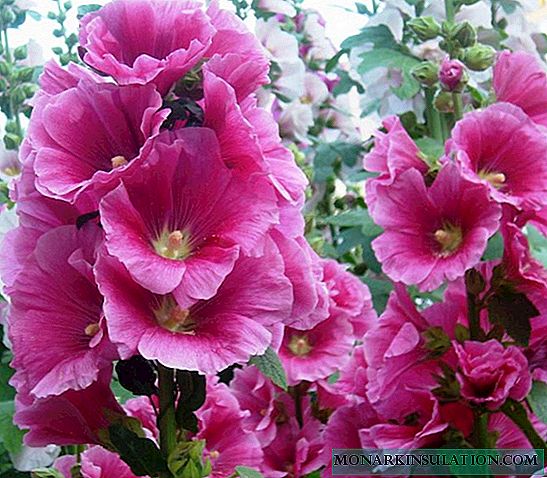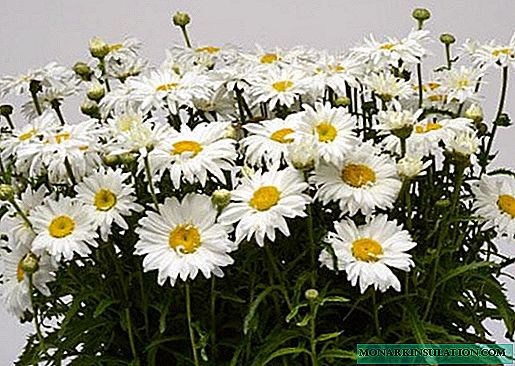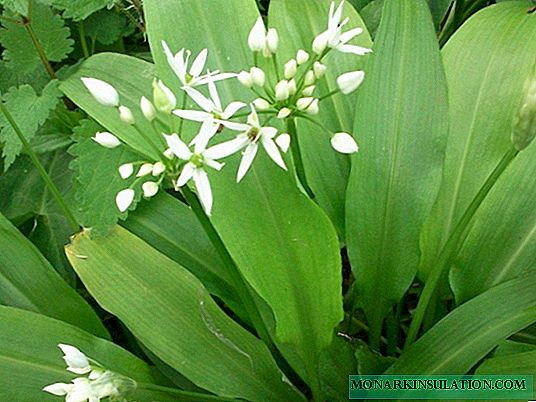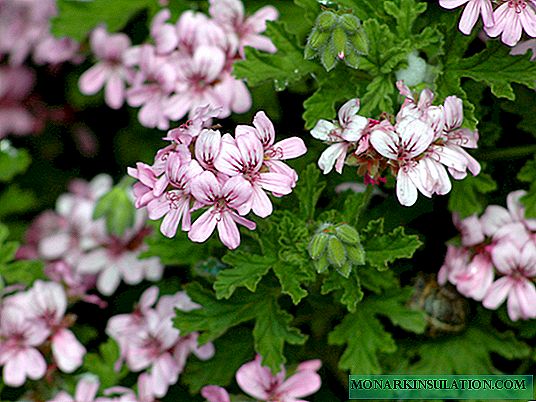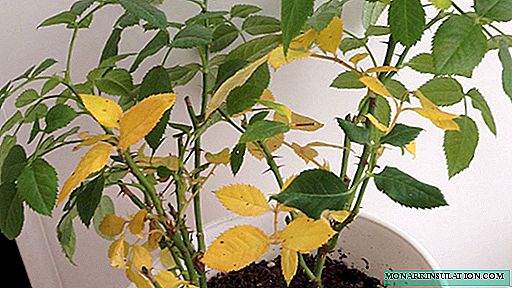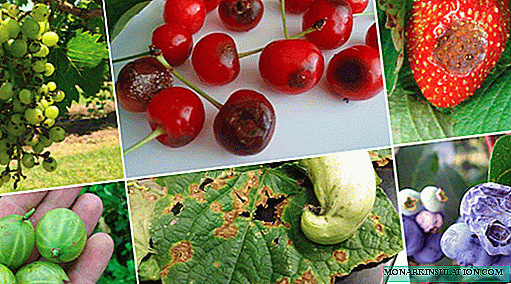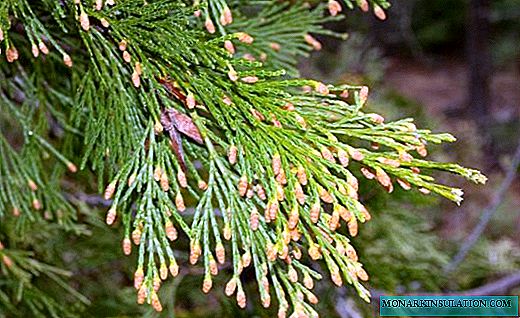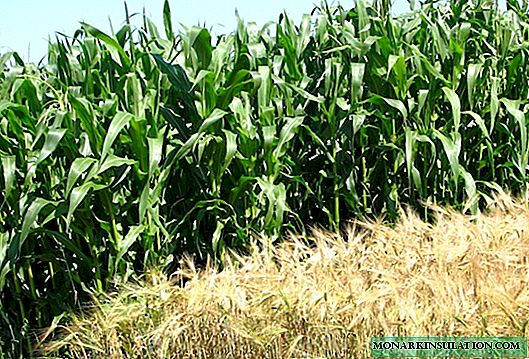
Kuban breeders have created many varieties of tasty and unpretentious cherry plum. The earliest of them, opening the berry season, is the July rose. The worthy daughter of the well-known Kuban comet confidently became one of the leaders in its segment. When choosing a variety for planting this crop, do not pass by the July rose.
Grade description
Cherry plum July rose (aka June rose, aka Comet early) was obtained by breeders of the Crimean experimental selection station of the All-Russian Scientific Research Institute of Plant Growing. This station is located in the city of Krymsk, Krasnodar Territory. The variety was obtained by free pollination of the famous cherry plum Kuban comet created at the same station. July rose differs from the parent variety mainly in the earlier ripening of berries. It was entered in the State Register in 1999 and zoned in the North Caucasus region.
Free pollination is a selection method in which seedlings are obtained from the seeds of the parent plant. This is the easiest way with unpredictable results.
The tree at the July rose is medium-sized with a gray, smooth stem and a medium-thickened crown. Horizontal shoots have a diameter of 25-35 millimeters, weakly branching. Fruiting is carried out on the overgrowing short bouquet branches. Their life span is two to three years. Flowering occurs in the early stages - early April. Ripening berries very early - July rose opens the cherry plum and plum season at the end of June. The tree brings large and annual crops - at the age of eight it gives about ten kilograms of berries. Winter hardiness of the variety is high, drought resistance is medium. Immunity to diseases and adaptability to growing conditions are high. Fertility is high, the first berries appear in the third year after planting. The variety is self-infertile. For fertilization, you need varieties of cherry plum blooming simultaneously with the July rose - Traveler, Pramen and others.

Cherry plum berries July rose ripen in late June
Ovoid berries with an average weight of 29 grams with a slight waxy coating. The skin color is dark red with a pink tint. Yellow subcutaneous dots are present on average. The pulp is dense, slightly succulent, fibrous, fine-grained with a pleasant sweet and sour taste. Tasting score - 4.4 points. The bone is small; it does not separate completely. In the air, the flesh does not darken soon. The purpose of the fruit is universal. Transportability and durability are good. The disadvantages include the non-simultaneous ripening of berries, although for some this is a virtue.

Cherry plum berries July rose have an average weight of 29 grams
Video: review of ripening cherry plum Comet early (July rose)
Planting cherry plum varieties July Rose
Before you begin planting the July rose, you need to choose the right place for it. After all, only when creating favorable conditions for cherry plum will it grow well and give high yields of quality fruits. Such conditions can be ensured by planting a tree on a small south or southwest slope if there is protection from cold winds from the north or northeast in the form of a building wall, fence or thick trees. Moreover, plums need to be placed so that the shadow from such protection does not fall on the plant. The soil for planting needs loose, drained with a neutral or slightly acid reaction. Close occurrence of groundwater and waterlogging are not allowed.
Cherry plum is planted in early spring before the sap flow begins, while the seedling should be at rest. In the case of the purchase of a seedling with a closed root system, it can be planted at any time from April to October.
More often, seedlings with an open root system are purchased - they do this in the fall during the period of mass digging by their nurseries. Choose a tree with well-developed fibrous roots without any growths and cones. The trunk and branches should have a smooth, healthy bark without cracks or other damage. Age should not exceed two years, since older trees tolerate transplanting worse, more difficult to take root, later come into bearing.

Choose a tree with well-developed fibrous roots, without any growths and cones
After acquiring a seedling, you should dig it in the garden so that it is well preserved until spring. To do this, dig a small hole with a depth of 30-40 centimeters and a length of 80-100 centimeters. Pour a small layer of sand with a thickness of 5-10 centimeters and lay the tree roots on the sand, and the tip on the edge of the pit. First, you should dip the roots into a mash of clay and mullein so that they do not dry out in the future. They fill the roots with sand and water it. With the onset of cold weather, they fill the hole completely with earth, leaving only the top of the tree open. You can also save the seedlings in the basement if the temperature in it is maintained between 0-5 ° C.

After acquiring a seedling, you should dig it in the garden so that it is well preserved until spring
After this, prepare the landing pit in the following order:
- Dig a hole 70-80 centimeters deep. The diameter may be the same or somewhat larger. The rule applies - the poorer the composition of the soil - the larger the volume of the pit needed. On sandy soils, landing pits with a volume of at least one cubic meter, and preferably 1.5-2.0 m, are prepared3.
- If the soil is heavy, then to create drainage, a layer of broken brick, crushed stone, expanded clay with a thickness of 10-15 centimeters is poured at the bottom of the pit. On sandy soils, instead of this, a clay layer of the same thickness is laid on the bottom, which serves to retain water.
- After that, a nutritious mixture is prepared for the future tree, consisting of identical parts of chernozem, humus, grass peat and sand with the addition of 300-400 grams of superphosphate and 2-3 liters of wood ash.
- With this mixture, the pit is filled to the brim, after which it is covered with roofing material, film, slate, etc. This is done so that during the flood period nutrients are not washed.
Step-by-step instructions for planting cherry plum July rose
In early spring, when favorable conditions occur, a tree is planted in the following order:
- They dig out a sapling (they take it out of the basement) and place its roots in water for several hours. It is advisable to add Kornevin, Heteroauksin, Epin or similar growth stimulants and root formation.
- Open the hole and take out part of the soil from it so that the roots of the tree can freely fit in the resulting hole.
- A small knoll is poured in the center, and at a distance of 10-15 centimeters from the center, a wooden stake 80-120 centimeters above the ground is driven in.
- The seedling is lowered onto the knoll so that the root neck is placed on top, and the roots are evenly spread on the slopes.
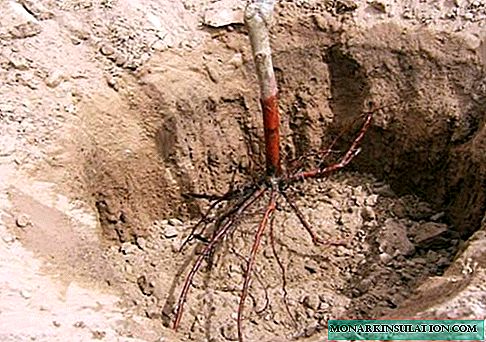
The seedling is lowered onto the knoll so that the root neck is placed on top, and the roots are evenly spread on the slopes.
- Roots fall asleep with a layer-by-layer compaction of the earth.
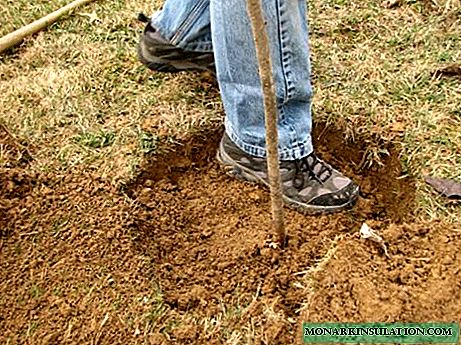
When backfilling the roots, tamp the soil in layers
- Tie the sapling to the peg with a soft, elastic material. Usually this is done in the form of an “eight” so as not to pinch the bark.
- Around the tree should form a near-trunk circle along the diameter of the planting pit.
- Water the sapling with plenty of water - as a result, the soil should fit well to the roots.
- After some time, the near-stem circle is loosened and covered with a layer of mulch. You can use hay, compost, rotted sawdust, etc.
- Proceed to the formation of the crown by trimming the central conductor to a height of 60-80 centimeters and shortening the branches to a size of 20-30 centimeters.
Features of cultivation and subtleties of care
The main activities for caring for the July rose are the same as for other representatives of the culture.
Watering
Due to the low drought tolerance of the variety, the tree should be watered quite often - as a rule, this is done at intervals of 3-4 weeks. The depth of soil moisture should be within 25-35 centimeters. Excessive watering will not bring any benefits - you should not arrange a “swamp” in the near-trunk circle. After the first watering, which is carried out after flowering, the soil should be loosened and mulched. In the future, it will be possible to water through a mulching layer - this will reduce the amount of watering, save from constant cultivation and prevent the growth of weeds. The disadvantage of such a system is that mulch can accumulate slugs, grubs and other pests. If such pests are found, they should be collected and destroyed, and the soil should be dried. At the next watering, the mulching layer can be restored.
Top dressing
Cherry plums begin to be fed in the 3-4th year after planting, when the supply of nutrients in the planting pit begins to deplete.
Table: fertilizing for cherry plum
| Types of fertilizers | Dates and spacing | Application Method | Dosage |
| Mineral fertilizers | |||
| Phosphoric (superphosphate, supegro) | October, annually | Evenly sprinkled in the trunk circle and dig | 20-30 g / m2 |
| Nitrogen (nitroammophosk, ammonium nitrate, urea) | April, annually | 20-30 g / m2 | |
| Potash (potassium monophosphate, potassium sulfate) | End of May - beginning of June, annually | Dissolve in water when watering | 10-20 g / m2 |
| Complex mineral fertilizers are used according to the instructions | |||
| Organic fertilizer | |||
| Compost, humus, grass peat | Once every three years in April or October | Evenly sprinkled in the trunk circle and dig | 5-10 kg / m2 |
| Liquid concentrated infusions | May - early June, annually | A concentrated infusion of one of the components is prepared:
Pour the selected component with ten liters of water and insist in a warm place for 5-10 days. | One liter of concentrate per 1 m2 |
Cropping and shaping the crown
For a medium-sized tree, which is possessed by cherry plum, July Rose, the formation in the form of an improved bowl is most appropriate. Such a crown is well lit and ventilated, it is easy to care for and harvest.
Step-by-step instructions for forming a crown
It is not difficult to carry out such a formation - even a beginner gardener will cope with this. This operation should be performed at a time when sap flow is still absent and the tree is at rest.
- In the second or third year after planting on a tree, three or four branches are chosen - they will become skeletal. These branches should be located at a distance of 15-20 centimeters from each other and have a different growth direction.
- Selected branches are cut to a length of 30-40 centimeters, and all the rest are cut "into a ring."
- The center conductor should be cut off above the base of the upper branch.
- After one or two years, two branches of the second order should be formed on the skeletal branches. To do this, choose such shoots, the distance between which is 50-60 centimeters. They are cut to a length of 30-40 centimeters, and all others are removed.
- In subsequent years, equal length branches should be maintained so that none of them begin to dominate and become the central conductor.
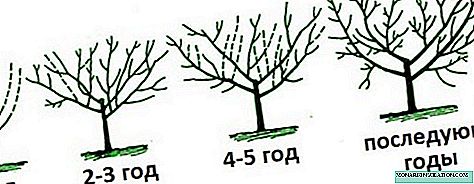
It’s easy to shape the crown according to the type of bowl - even a beginner gardener will cope with this
Adjust cropping
This pruning is also carried out in early spring. Its purpose is to adjust the degree of filling of the crown, providing good illumination and ventilation of the internal volume. It is not necessary to remove an excessive number of shoots, as this part of the crop is lost.
Support Crop
This pruning is carried out in the first half of summer, when there is an active increase in young shoots. They are shortened by 10-15 centimeters, provoking the branching and laying of flower buds for next year's crop. This technique is called coinage.
Sanitary pruning
This type of pruning is performed in late autumn after stopping sap flow. At the same time, dry, diseased and damaged shoots are cut out. If necessary, repeat this pruning in early spring.
Cropping Rules
In order for the tree to tolerate the operation of removing part of the branches well, the following rules should be followed:
- Before starting work on trimming, you must sharpen the entire cutting tool — secateurs, delimbers, knives, saws and hacksaws.
- Then the tool is treated with a 1% solution of copper sulfate or a 3% solution of hydrogen peroxide. Do not use gasoline, kerosene, solvent or other petroleum products for disinfection.
- If the branch is cut completely - do it the way "on the ring." You can not leave hemp and knots, as they will subsequently become a source of infections.
- All sections with a diameter of more than one centimeter are cleaned with a knife and covered with a layer of a garden varnish made on the basis of natural components - lanolin, beeswax, etc. Garden varieties based on petrolatum should not be used. According to experienced gardeners, refined products harm the plant.
Diseases and Pests
Many gardeners claim that cherry plum is so resistant to disease that you can, in general, do without chemistry when caring for it. We will not be so categorical and will focus on the implementation of preventive and sanitary measures that, combined with a high immunity to fungal diseases, will help to avoid problems associated with them.
Table: sanitary and preventive maintenance
| Scope of work | Ways to do the work | Deadlines | Achieved effect |
| Fallen leaves, weeds, plant and other garbage are collected, burned, and the ash formed in this process is used as fertilizer | Autumn after leaf fall | Destruction of wintering pests, fungal spores | |
| Inspection and cleaning of the bark | The bark of trees is carefully inspected, revealed damage, cracks are cleaned and cut to healthy wood. Then it is treated with 1% solution of copper sulfate or another fungicide and covered with a layer of garden var. | Fall spring | Prevention of homosis and other diseases of the tree bark |
| Whitewashing of boles and branches | Apply a solution of slaked lime with the addition of 1% copper sulfate or special garden paints | Autumn | Prevention of sunburn of the bark, creation of obstacles for moving harmful insects along the trunk and branches |
| Dig the soil of the near-stem circle onto a shovel bayonet, turning over the earth | Late autumn, before frost | Insect pests wintering in the soil rise to the surface, where they die from frost | |
| Processing of crown and soil with copper sulfate | Apply a 3% solution of copper sulfate or Bordeaux mixture. Can be replaced with 5% solution of iron sulfate. | Late fall, early spring | Disinfection and prevention against fungi and insects |
| Pesticide treatment | Apply DNOC once every three years, Nitrafen - in other years | Early spring | Prevention against fungi and insects |
| Systemic fungicide treatment | Due to the addiction of fungi to a particular preparation, treatments lose their effectiveness more than three times a season. It should alternate drugs. Immediately prior to harvest, only short-term preparations can be used. For example, Chorus is used for 7 days, Quadris - 5 days before eating fruits. | The first time after flowering, then with an interval of 2-3 weeks. Finish processing 1-2 weeks before harvesting. | Fungal Prevention |
| Insecticide treatment | Immediately after flowering, Decis, Fufanon can be used. Then they switch to biological products such as Iskra Bio and others. These treatments should not be neglected - they will allow to destroy the butterflies of the moth, plum sawfly, etc. When the gardener finds their larvae in the fruits, it will be too late to fight. | Pest Prevention | |
Possible plum disease
Cherry plum July rose, as already noted, is not too susceptible to fungal diseases.Therefore, indeed, if the season is not rainy and there are no signs of fungi in the garden, then treatment with systemic fungicides can be excluded. It will not be too late to apply it in case of possible detection of signs of the disease and stop its development. Just familiarize the gardener with the main representatives of the diseases and their symptoms briefly.
Table: main cherry plum diseases
| Disease name | Signs | Effects | Treatment |
| Moniliosis (monilial burn, fruit rot) | In the first stage, when infection occurs in the spring during flowering, flowers, young shoots and leaves are affected. The affected parts of the plant will fade and blacken. The second stage occurs in the summer during the ripening of fruits that are affected by fruit rot. | The fungus, spreading throughout the plant, can affect all shoots and destroy the tree. | The affected shoots are cut, capturing 20-30 centimeters of healthy wood and treated with fungicides. Affected parts of the plant are removed and destroyed. |
| Polystigmosis (red spotting) | The appearance of red spots on the leaves | Leaves dry, turn yellow and fall. The fruits become tasteless and unfit for food. | Collection and disposal of affected leaves and fruits. Fungicide treatment. |
| Milky shine | The name of the disease is actually its sign. Leaves turn pale, become silvery. The wood on the cut is dark. | A very dangerous fungal disease that usually occurs when branches are frozen. The fungus quickly spreads inside the shoots, clogs blood vessels, sap flow stops and the wood dies. | The treatment of the disease consists only in the removal of the affected branches. If everyone is affected, the tree is uprooted. |
Photo gallery: signs of major cherry plum diseases
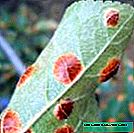
- Polystigmosis can be determined by the presence of red spots on the leaves
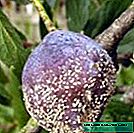
- In summer, moniliosis affects berries with fruit rot.

- Milky gloss is a dangerous disease
Likely pests of cherry plum
As mentioned above, preventive measures are more relevant for pest control, since the gardener usually detects the effects of insect infestations only when the crop has already suffered significant damage.
Table: main possible plum pests
| Pest name | Signs of attack | Possible consequences | Methods of struggle |
| Plum moth | On cherry plum berries you can see small holes with droplets of gum. This suggests that the caterpillars that emerged from the eggs laid by butterflies in the soil have already climbed the crown and penetrated into the berries. Caterpillars descend from the crown on thin cobwebs. | Loss of part of the crop. | Prevention |
| Plum sawfly | Sawfly larvae penetrate young unripe berries and eat out the kernels of the bones. | Prevention | |
| Bunny | Shriveled green berries. Having broken such a berry, you can see a bone eaten from the inside and a small beetle larva in it. | Prevention Manually collecting beetles in early spring, when in the morning they sit numb on branches. At this time, they can simply be shaken off on a cloth or film spread under a tree. |
Photo gallery: main plum pests

- Butterfly plum moth lays eggs in the soil
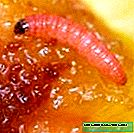
- The plum moth caterpillar feeds on the flesh of berries
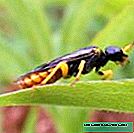
- Female plum sawfly lays eggs in the soil
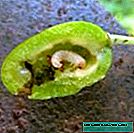
- Sawfly larvae penetrate young unripe berries and eat out the kernels of bones
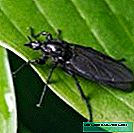
- Topless - small black bugs
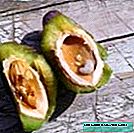
- Larvae of longhorn beetles can eat out kernels of already hardened bones
Grade Reviews
In our garden an amazing tree grows and bears fruit - cherry plum "July Rose". A small twig was planted in 2009. As she grew, she tried to form a crown near the tree by pruning. This is my first experience, I tried it at random and succeeded. Photo of a large crop of 2015. Cherry plum is very sweet, eaten a lot directly from the tree, and the jam from it is wonderful. The fruits ripen unevenly, but it’s even good, because a lot needs to be processed immediately. Mature fall, it is better to plant grass under the tree so that the cream does not break. Cherry plum is not sick, almost completely not affected by pests, and therefore does not require chemical treatments.
Raspberry, Tula - Kaluga
//forumsad.ru/threads/alycha-gibridnaja-ili-sliva-russkaja.105/
I was also very pleased with the taste of the June rose, yesterday I tried it in a garden in the Yegoryevsky district.
Andrey Vasiliev, Moscow
//www.forumhouse.ru/threads/261664/page-2
The Scythian gold and the July rose turned out to be lacking. winter hardy for me.
toliam1, St. Petersburg
//www.forumhouse.ru/threads/261664/page-2
Re: July Rose (June Rose, Early Comet) My friend has two Early Comet trees in the garden. Despite the fact that I have seven varieties of plums and cherry plum in my garden, last year I took cuttings from him and went on a wild cherry plum in my school to have this wonderful cherry plum in my garden. Early, tasty, trouble-free in cultivation. I like her very much. The bone is half detached, at least from that Early Comet that is in the friend’s garden.
Apple, Belgorod
//forum.vinograd.info/showthread.php?t=11105
Re: July rose (June rose, Comet early) Comet early - delicious, juicy. Ripened on July 4th. The bone separates. The skin is dense, very fruitful. On July 6 removed.
Cherry plum July rose - delicious, juicy
igorek75, Odessa region
//forum.vinograd.info/showthread.php?t=11105
The July rose has many indisputable advantages - early ripening, early maturity, productivity, short stature, winter hardiness and immunity to diseases. These advantages are reinforced by the excellent taste of berries, their longevity and transportability. The variety has a commercial appeal and can be recommended both for growing in personal plots and in farm gardens.















